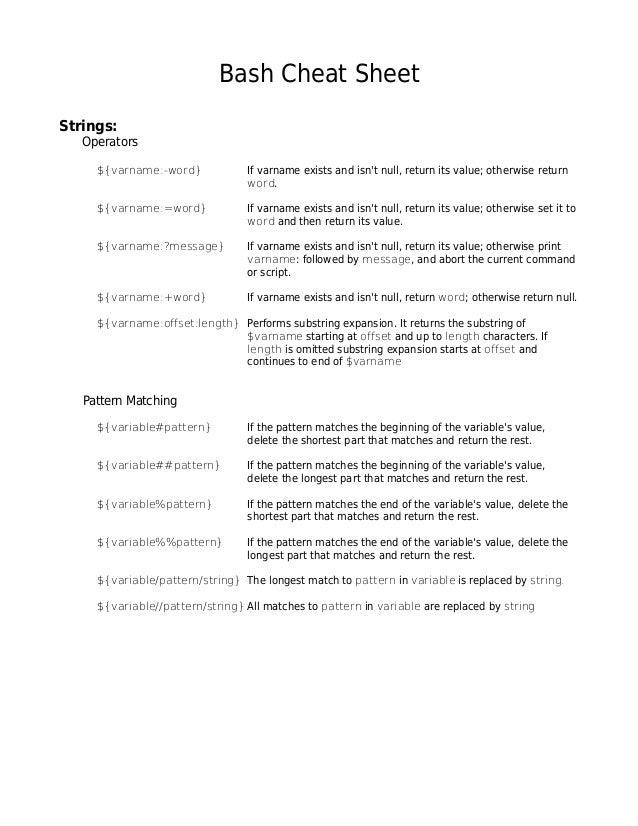If you’re lucky enough to find a command execution vulnerability during a penetration test, pretty soon afterwards you’ll probably want an interactive shell.
Bash Cheat Sheet Pdf
If it’s not possible to add a new account / SSH key / .rhosts file and just log in, your next step is likely to be either trowing back a reverse shell or binding a shell to a TCP port. This page deals with the former.
In this Linux/Unix command line cheat sheet, you will learn: Basic Linux commands File Permission commands Environment Variables command User management commands of linux Networking command Process co. Bash Test Operators Enjoy this cheat sheet at its fullest within Dash, the macOS documentation browser. Everything that can be useful in test constructs (if statements) in a bash environment. This cheat sheet is based on the Advanced Bash-Scripting Guide by Mendel Cooper. Compound Comparison.
Your options for creating a reverse shell are limited by the scripting languages installed on the target system – though you could probably upload a binary program too if you’re suitably well prepared.
The examples shown are tailored to Unix-like systems. Some of the examples below should also work on Windows if you use substitute “/bin/sh -i” with “cmd.exe”.
Each of the methods below is aimed to be a one-liner that you can copy/paste. Download adobe photoshop 2020 for mac. As such they’re quite short lines, but not very readable.
Bash
Adobe zii cc 2019 mac. Some versions of bash can send you a reverse shell (this was tested on Ubuntu 10.10):
PERL
Here’s a shorter, feature-free version of the perl-reverse-shell:
Clean my mac licence key. There’s also an alternative PERL revere shell here.
Python
This was tested under Linux / Python 2.7:

PHP
This code assumes that the TCP connection uses file descriptor 3. This worked on my test system. If it doesn’t work, try 4, 5, 6…
If you want a .php file to upload, see the more featureful and robust php-reverse-shell.
Ruby
Cheat Sheet Bash Command
Netcat
Netcat is rarely present on production systems and even if it is there are several version of netcat, some of which don’t support the -e option.
If you have the wrong version of netcat installed, Jeff Price points out here that you might still be able to get your reverse shell back like this:
Java
[Untested submission from anonymous reader]
xterm
One of the simplest forms of reverse shell is an xterm session. The following command should be run on the server. It will try to connect back to you (10.0.0.1) on TCP port 6001.
To catch the incoming xterm, start an X-Server (:1 – which listens on TCP port 6001). One way to do this is with Xnest (to be run on your system):
You’ll need to authorise the target to connect to you (command also run on your host):
Further Reading
Also check out Bernardo’s Reverse Shell One-Liners. He has some alternative approaches and doesn’t rely on /bin/sh for his Ruby reverse shell.
There’s a reverse shell written in gawk over here. Gawk is not something that I’ve ever used myself. However, it seems to get installed by default quite often, so is exactly the sort of language pentesters might want to use for reverse shells.
Tags: bash, cheatsheet, netcat, pentest, perl, php, python, reverseshell, ruby, xterm

Posted in Shells
Bash Cheat Sheet Shortcuts
